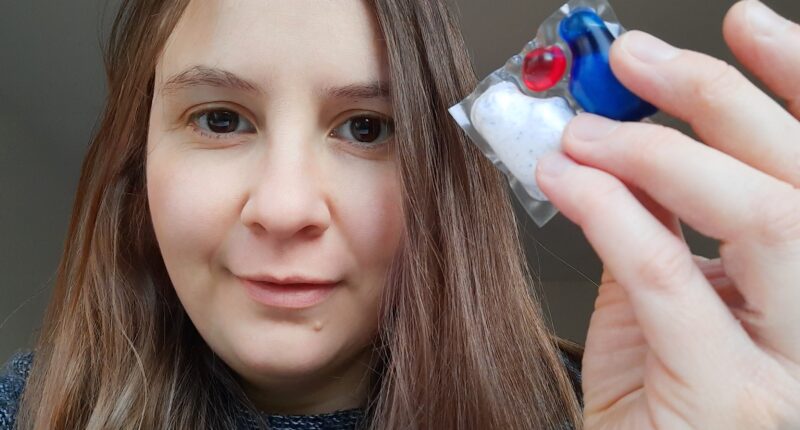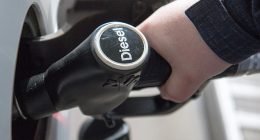I’VE switched off my heating, cancelled Netflix and bought in a strict two-minute limit on showers – but what about my cleaning methods?
My relentless drive to save money at home recently reached a tipping point after one “hack” went miserably wrong.
It started with a widely-circulated social media tip about halving dishwasher tablets to make them last twice as long.
It sounded like a game-changer for me, given that my dishwasher only seems happy with fancy Finish tablets, typically costing 15p each from Tesco.
Over a year, these cost us more than £50 in total, given that we use the machine every day except for holidays.
So over the past week, I’ve been experimenting with delicately cutting up both liquid and powder tablets to make them last longer.


Obviously, it’s not easy to cut small tablets comprising three different parts exactly in half, especially as two of those parts are liquid.
I did what I could – cutting them over a pot so that when they leaked I could just tip the contents into the dishwasher tab compartment.
Slicing powder tabs in half was easier but still a messy business and there was some wastage as they crumbled up.
I was hoping my plates would come out sparkling as usual but sadly the dishwasher’s normal performance just didn’t hold up.
Most read in Money
The plates and cutlery still had bits of food stuck on and my mugs went all brown and manky inside from tea stains.
After six tests I gave up as I was just washing up again after each dishwasher cycle to get the plates spotless – wasting extra water and energy.
Both liquid and powder tablets failed the test.
Dishwashers are on average four times more water efficient than washing by hand, per place setting, according to recent research by Which?.
So it seems that the best solution is to get the dishwasher to do a proper job to avoid using further water and energy.
I asked Finish, a major dishwasher tab manufacturer, what it thought of the halving tip.
It said: “Finish is deeply concerned regarding the intentional promotion of the misuse of dishwashing tablets by cutting them in half.
“We consider such ‘off-label’ suggestions to be dangerous since there would be an adverse impact on both consumer safety and product efficacy.
“Therefore, we strongly advise our consumers to carefully follow all the instructions on our product labels to avoid unnecessary risk and ensure a satisfactory dishwashing experience.”
Although they are clearly biased in favour of their product, I do agree with them here.
While I’m all for money-saving, some tips appear to be a false economy that cost even more to fix.
This hack may work for some, but for me, the only thing being cleaned out was my wallet.
Other ways to save cash with your dishwasher
Your normal dishwasher setting is usually set at a temperature of between 55ºC and 65ºC.
An eco wash or energy saving setting generally uses around 20% to 40% less energy, according to Which?.
They typically run at 45ºC to 50ºC, which means it’s cheaper to run but still gets your dishes clean.
These settings usually use less water too, but run for longer than a standard wash.
Some dishwashers also have a sensor wash mode that automatically detects the required water temperature based on how dirty the dishes are.
If you use a setting to get very dirty dishes clean this usually runs at a higher than normal temperature, so will cost more.
It’s worth checking your user manual to see how the settings work as you could cut your energy bill by choosing one that runs at a lower temperature.
How much you can save will depend on the model you have and how much you use it.
Choosing an energy-efficient dishwasher could also save you cash so look out for labels if you’re buying a new one.
A rating system from A to G will show you how efficient an appliance is with A the best and G being the worst.
Waiting until you have a full load could reduce your running costs, as you’re using the same amount of water and energy regardless of how many items are in the machine.
Some dishwashers have a half load option, but this can still use up to 90% of the water and energy used by a full load, Which? says.


Equally over-filling the machine – just like overfilling your fridge – could make it run less efficiently.
The lower level of the dishwasher is where both the highest pressure and temperature are, so load your dirtiest items here.












